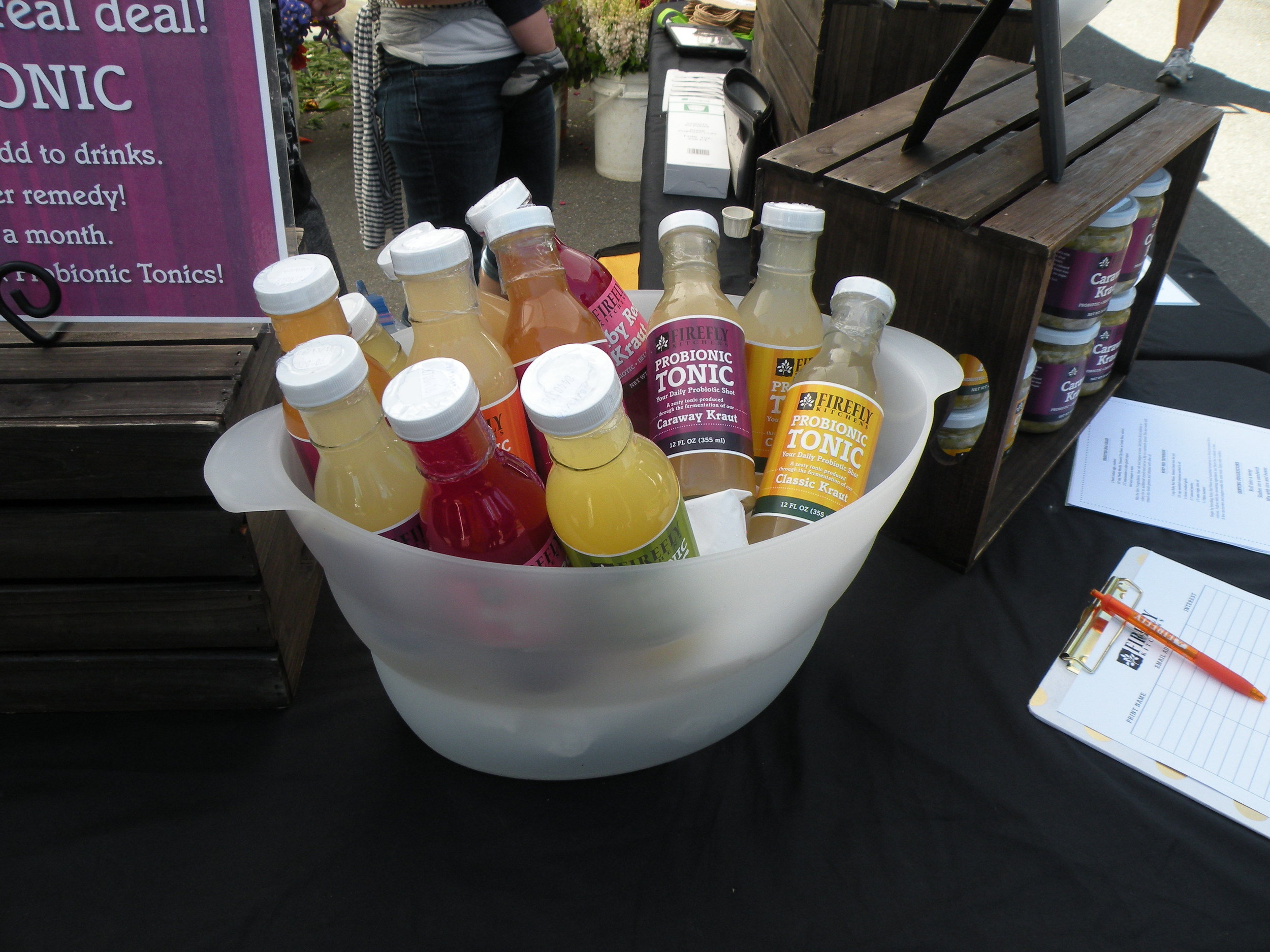Before I get into a fascinating list of little facts about the American Way of Eating, garnered from a book I've been reading, I have a quick news flash: Mental Floss reports that "you can now buy pickle juice in a can." Isn't this what I just mentioned back in this post? Our own Firefly Kitchen sells bottles of their pickling brine, which they call "tonics" and recommend for probiotics or cocktails.

The company marketing the canned version has this to say about the product:
"It's literally a burst of acid and flavor all in one that brightens cocktails and dishes in a very subtle, balanced way. It rounds out cocktails and cooking recipes similar to how a pinch of salt does."
We may be witnessing the birth of the next food trend, folks. And how we Americans do love food trends. According to the latest food-related book I've been reading, our jaded palates and relentless thirst for novelty drive the food industry always to be dreaming up new products and trend foods to market to us. Novelties like the Doritos Locos Taco or the latest Frappucino flavor or heavily touted "superfood." (How is it that no one is yet trying to sell me chia-seed-encrusted acai berries with a creamy Greek yogurt center?)

This fun book differs from the usual food books because the author tries to get to the bottom of why we eat what we eat as Americans. Egan is less about the hand-wringing over our increasing fatness and more about exploring cultural drivers.
Consider some of her interesting findings (marked with Kindle locations):
- In March 2015, Americans for the first time spent more money at restaurants and bars than at grocery stores (360). Mind-boggling! We really don't cook much anymore, do we? Or we open a box of something, add another ingredient, mix it up, and call it cooking.
- And the grocery stores are trying their darnedest to lure us back with 42,214 items on the shelves, on average (425). That's a lot of items. It's funny that the publishing industry bewails the number of new books published and self-published every year, and how it becomes harder and harder to share the shrinking pie of money and attention span, but the same could be said for food products. It's so very hard to get a new product noticed! Especially when there are over 20,000 new items per year (483).
- Egan chalks up our shift to pre-made food to our tendency to overwork. Americans now work 200 more hours per year than in 1970 (449). Who has time to cook? If anyone is sitting down to a meal with friends or family, more likely now it's weekend brunch, making...
- Pancakes and French toast among the most-searched of all recipes online (455)! And, if you aren't even making that meal yourself, good news, because "brunch is the new secular church" (2312). It's where we are willing to stand in line for an hour and linger over food with loved ones because we can't do it during the week, though we still hunger for that community.
- If brunch is the new American church, Thanksgiving, Christmas, and Super Bowl Sunday are the new high holy days. We gather and we flat-out eat. Egan cites a survey in which "one in five Americans would rather skip the wedding of a close friend or family member than miss seeing their team play [in the Super Bowl]" (3878). But I'm sure we'd all be fine with those same close friends or family members showing up at our Super Bowl party with their bags of chips and bowls of queso.
- And Egan pinpoints something in the American character that I hadn't thought much about before: we are contrarians. Meaning, when we're told over and over that 35% of American adults are overweight and 28% are obese (2603), and we ought to eat more vegetables and less fast food, and we ought to exercise more, and blah blah blah -- the contrary streak in us says, "You know what? I'm just going to eat horribly and not move at all, and you're not the boss of me!" Even if we're one of the Americans spending between $20-40 billion per year on weight-loss products and programs (2686), we still have our "screw it" moments when we blow the diet in a big way and go out in a cream-filled, deep-fried blaze of glory.
- Have we been blaming Big Food, when the problem lies much closer to home? As Egan quotes, "People incorrectly think the food industry wants to make us fat. 'That's not true,' [her source] says. 'If vegetables and water are going to sell, that's what they're going to put on their menu.'" Thought-provoking point! The food industry takes advantage of my weakness for salt, sugar, and bad fats, but if I know better and choose, often irrationally, to go along for the ride, the blame is surely shared.
As you might have noticed at the Market, you can have it both ways. You can have the best fruits and vegetables (at their most nutritious and ripe), or you can indulge in pastries and sweets. You can buy all the raw ingredients to cook your own meal, or you can have something piping hot and tasty made for you. You can find traditional offerings that folks have eaten for thousands of years or venture into new territory (I'm looking at you, pickle brine tonic!). You can wander the booths, keeping to yourself and shooting dirty looks at the person who reaches for the rutabaga you had your eye on, or you can buddy up with the farmers and vendors and volunteers and build some community.
I have 12% further to go on Devoured, so I'm hoping Egan talks about the American trend in farmers markets. If ours is anything to go by, it seems like the Market is the place you really can "have it your way."




